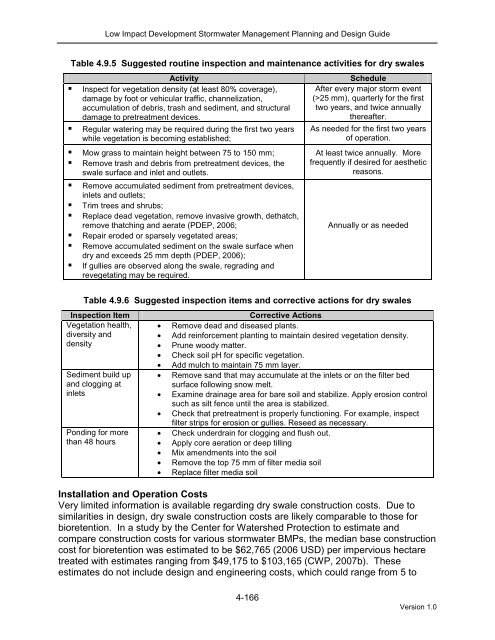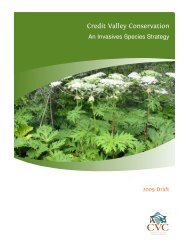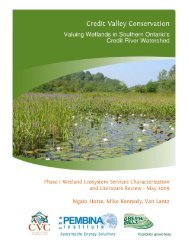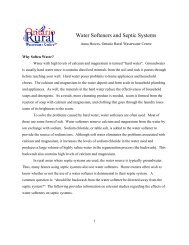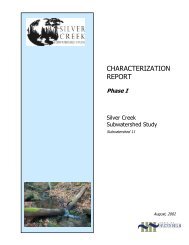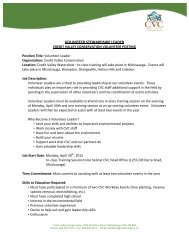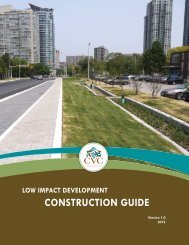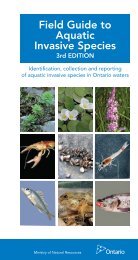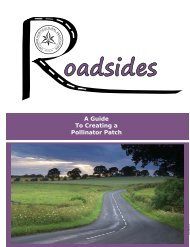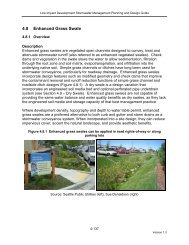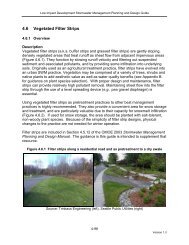Section 4.9 - Dry Swales - Sustainable Technologies Evaluation ...
Section 4.9 - Dry Swales - Sustainable Technologies Evaluation ...
Section 4.9 - Dry Swales - Sustainable Technologies Evaluation ...
You also want an ePaper? Increase the reach of your titles
YUMPU automatically turns print PDFs into web optimized ePapers that Google loves.
Low Impact Development Stormwater Management Planning and Design Guide<br />
<br />
<br />
<br />
<br />
<br />
<br />
<br />
<br />
<br />
<br />
Table <strong>4.9</strong>.5 Suggested routine inspection and maintenance activities for dry swales<br />
Activity<br />
Inspect for vegetation density (at least 80% coverage),<br />
damage by foot or vehicular traffic, channelization,<br />
accumulation of debris, trash and sediment, and structural<br />
damage to pretreatment devices.<br />
Regular watering may be required during the first two years<br />
while vegetation is becoming established;<br />
Mow grass to maintain height between 75 to 150 mm;<br />
Remove trash and debris from pretreatment devices, the<br />
swale surface and inlet and outlets.<br />
Remove accumulated sediment from pretreatment devices,<br />
inlets and outlets;<br />
Trim trees and shrubs;<br />
Replace dead vegetation, remove invasive growth, dethatch,<br />
remove thatching and aerate (PDEP, 2006;<br />
Repair eroded or sparsely vegetated areas;<br />
Remove accumulated sediment on the swale surface when<br />
dry and exceeds 25 mm depth (PDEP, 2006);<br />
If gullies are observed along the swale, regrading and<br />
revegetating may be required.<br />
Schedule<br />
After every major storm event<br />
(>25 mm), quarterly for the first<br />
two years, and twice annually<br />
thereafter.<br />
As needed for the first two years<br />
of operation.<br />
At least twice annually. More<br />
frequently if desired for aesthetic<br />
reasons.<br />
Annually or as needed<br />
Table <strong>4.9</strong>.6 Suggested inspection items and corrective actions for dry swales<br />
Inspection Item<br />
Vegetation health,<br />
diversity and<br />
density<br />
Sediment build up<br />
and clogging at<br />
inlets<br />
Ponding for more<br />
than 48 hours<br />
Corrective Actions<br />
• Remove dead and diseased plants.<br />
• Add reinforcement planting to maintain desired vegetation density.<br />
• Prune woody matter.<br />
• Check soil pH for specific vegetation.<br />
• Add mulch to maintain 75 mm layer.<br />
• Remove sand that may accumulate at the inlets or on the filter bed<br />
surface following snow melt.<br />
• Examine drainage area for bare soil and stabilize. Apply erosion control<br />
such as silt fence until the area is stabilized.<br />
• Check that pretreatment is properly functioning. For example, inspect<br />
filter strips for erosion or gullies. Reseed as necessary.<br />
• Check underdrain for clogging and flush out.<br />
• Apply core aeration or deep tilling<br />
• Mix amendments into the soil<br />
• Remove the top 75 mm of filter media soil<br />
• Replace filter media soil<br />
Installation and Operation Costs<br />
Very limited information is available regarding dry swale construction costs. Due to<br />
similarities in design, dry swale construction costs are likely comparable to those for<br />
bioretention. In a study by the Center for Watershed Protection to estimate and<br />
compare construction costs for various stormwater BMPs, the median base construction<br />
cost for bioretention was estimated to be $62,765 (2006 USD) per impervious hectare<br />
treated with estimates ranging from $49,175 to $103,165 (CWP, 2007b). These<br />
estimates do not include design and engineering costs, which could range from 5 to<br />
4-166<br />
Version 1.0


